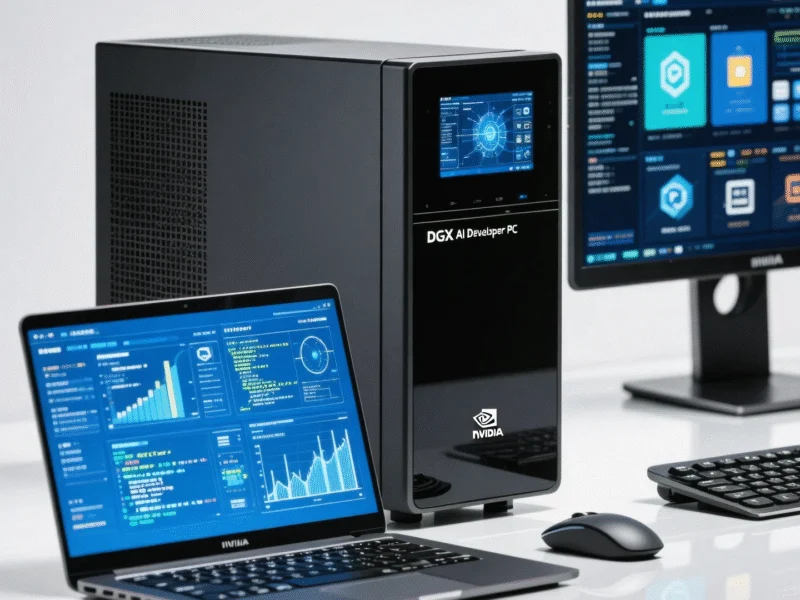Note: Featured image is for illustrative purposes only and does not represent any specific product, service, or entity mentioned in this article.
Microsoft’s Conversational Computing Vision
Microsoft has unveiled what it describes as a fundamental shift in how users interact with their computers, positioning the latest Windows 11 update as the moment every Windows 11 PC becomes an AI PC. The company’s ambitious vision centers on transforming passive computing into active, conversational partnerships between users and their devices.
“We believe this shift to conversational input will be as transformative as the mouse and keyboard in terms of unlocking new capabilities on the PC for the broadest set of people,” stated Microsoft executive vice president Yusuf Mehdi. This declaration underscores Microsoft’s conviction that voice and visual AI interactions represent the next evolutionary step in personal computing.
Windows Copilot: Your Digital Conversation Partner
The centerpiece of this transformation is Windows Copilot, now activated through natural wake words like “Hey Copilot.” The system provides clear audio and visual cues when listening, creating a more intuitive interaction flow. Users can end sessions by saying “goodbye” or through traditional input methods, maintaining flexibility across interaction preferences.
What sets this implementation apart is the contextual awareness Microsoft has built into Copilot. The AI can now view what’s on your screen and analyze your surroundings through camera access, enabling truly contextual assistance. This represents a significant advancement in how AI integrates with daily computing tasks to provide meaningful support.
Practical Applications Across Work and Play
Microsoft demonstrates the practical value through examples like sharing PowerPoint presentations with Copilot for real-time analysis and improvement suggestions. This application-focused approach shows how AI can enhance rather than replace human creativity and productivity.
The gaming sector receives particular attention with Gaming Copilot, now available in Beta on Xbox PC Game Bar and coming to portable gaming devices like the Asus ROG Ally. Whether players need in-game strategy suggestions or menu navigation help, the AI assistant aims to enhance the gaming experience without disrupting immersion. This expansion into entertainment follows broader industry developments in specialized AI applications.
The Technical Evolution: From Voice to Multi-Modal
While voice commands represent the most visible change, Microsoft is quietly building a more comprehensive AI framework. The upcoming text support for Copilot Vision (currently in Windows Insider testing) will create a truly multi-modal system capable of processing voice, text, and visual inputs interchangeably.
This technical foundation reflects how recent technology advancements are enabling more natural human-computer interactions across multiple sectors. The ability to switch between input methods based on context and preference represents a significant usability improvement over previous generation AI assistants.
User Choice and Implementation Flexibility
Recognizing that not all users will embrace AI features immediately, Microsoft has made the entire Copilot system optional. This approach acknowledges varying comfort levels with AI while allowing gradual adoption. Users can disable Copilot entirely or use it selectively for specific tasks where they find value.
This measured implementation strategy contrasts with some technology rollouts and aligns with how related innovations in other fields are being introduced with user choice as a priority. The opt-in nature helps address privacy concerns while allowing the technology to prove its value organically.
The Broader AI Ecosystem Context
Microsoft’s Windows 11 AI push occurs within a rapidly evolving landscape of intelligent systems. The company’s approach differs from some competitors by focusing on practical integration rather than standalone AI features. By embedding Copilot throughout the operating system, Microsoft aims to make AI assistance ubiquitous but unobtrusive.
This strategy reflects understanding of current market trends toward embedded intelligence rather than separate AI applications. The vision positions AI as an enhancement to existing workflows rather than requiring users to adopt completely new working methods.
Looking Forward: The Conversational Computing Future
Microsoft’s implementation suggests a future where computers understand not just commands, but context and intent. The ability for Copilot to analyze both digital content (like presentations) and physical environments through camera access points toward increasingly seamless integration between users’ digital and physical worlds.
As these technologies mature, the distinction between “AI PCs” and traditional computers may indeed blur to the point of irrelevance, exactly as Microsoft envisions. The success of this vision will depend on how naturally these interactions feel in daily use and how effectively they solve real user problems beyond the novelty of talking to your computer.
This article aggregates information from publicly available sources. All trademarks and copyrights belong to their respective owners.



